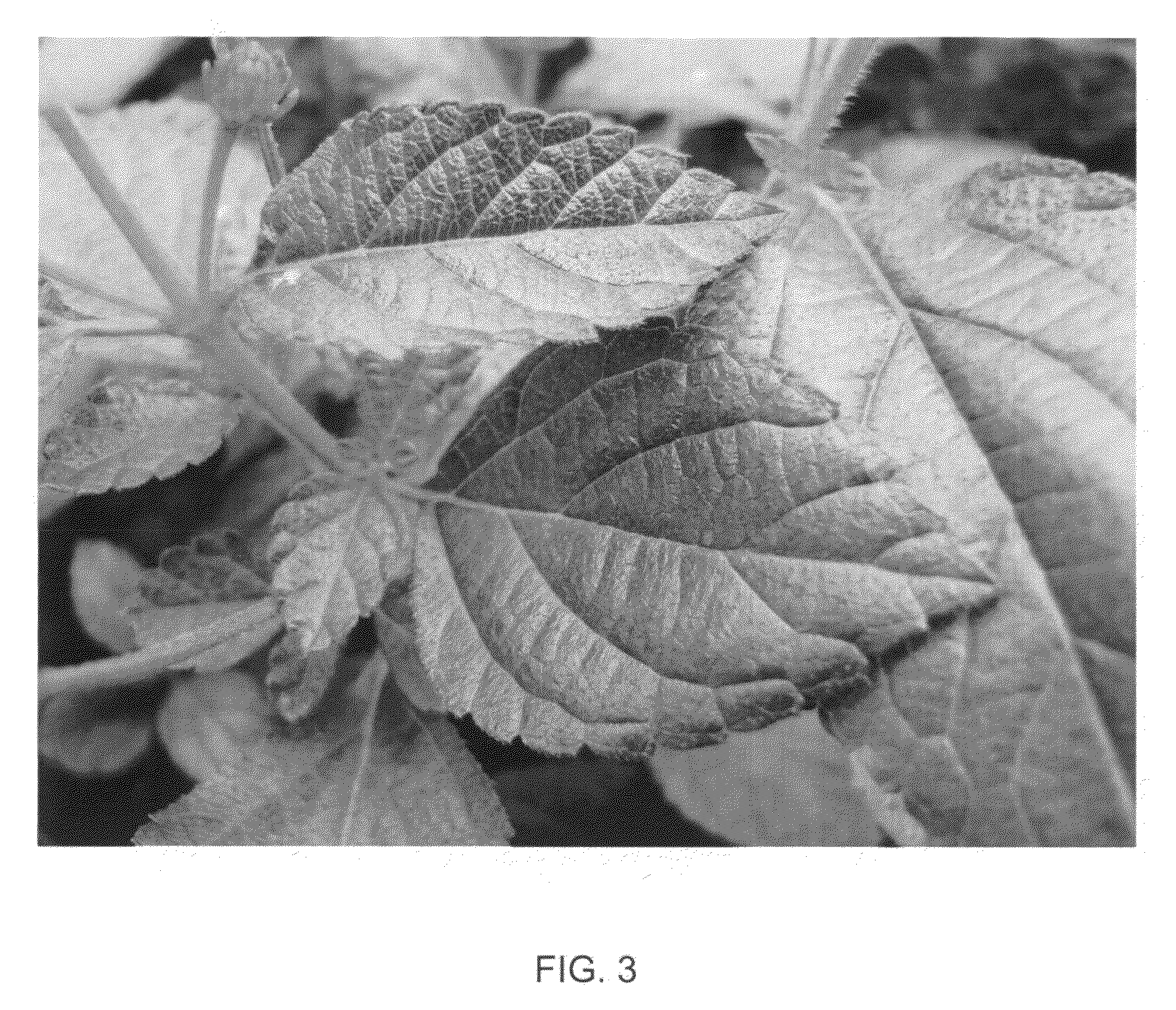Lantana plant named Chapel Hill Gold
a plant and chapel hill technology, applied in the field of new and distinct cultivars of lantana plants, can solve the problems of lack of consistent cold hardiness of the plant cultivar ‘new gold’
- Summary
- Abstract
- Description
- Claims
- Application Information
AI Technical Summary
Problems solved by technology
Method used
Image
Examples
Embodiment Construction
[0014]In the following description, color references are made to The Royal Horticultural Society Colour Chart, 2001 Edition, except where general terms of ordinary dictionary significance are used. Plants used for the description were grown in 11.8 L containers under outdoor conditions in a nursery in Watkinsville, Ga. Plants were 6 months old when the description was recorded. Colors are described using The Royal Horticultural Society Colour Chart (R.H.S.).[0015]Botanical classification: Lantana sp., cultivar ‘Chapel Hill Gold’. Parentage:—Lantana sp. cultivar ‘Chapel Hill Yellow’ (U.S. Plant Pat. No. 19,548). Propagation: Type cutting—terminal cuttings. Time to initiate roots, summer—about 10 days at 32° C.[0016]Plant description: Perennial flowering plant; subshrub; low growing, layered and spreading growth habit. Freely branching; two lateral branches potentially forming at every node; pinching enhances lateral branch development.[0017]Root description.—Numerous, fine, fibrous a...
PUM
 Login to View More
Login to View More Abstract
Description
Claims
Application Information
 Login to View More
Login to View More - R&D
- Intellectual Property
- Life Sciences
- Materials
- Tech Scout
- Unparalleled Data Quality
- Higher Quality Content
- 60% Fewer Hallucinations
Browse by: Latest US Patents, China's latest patents, Technical Efficacy Thesaurus, Application Domain, Technology Topic, Popular Technical Reports.
© 2025 PatSnap. All rights reserved.Legal|Privacy policy|Modern Slavery Act Transparency Statement|Sitemap|About US| Contact US: help@patsnap.com



